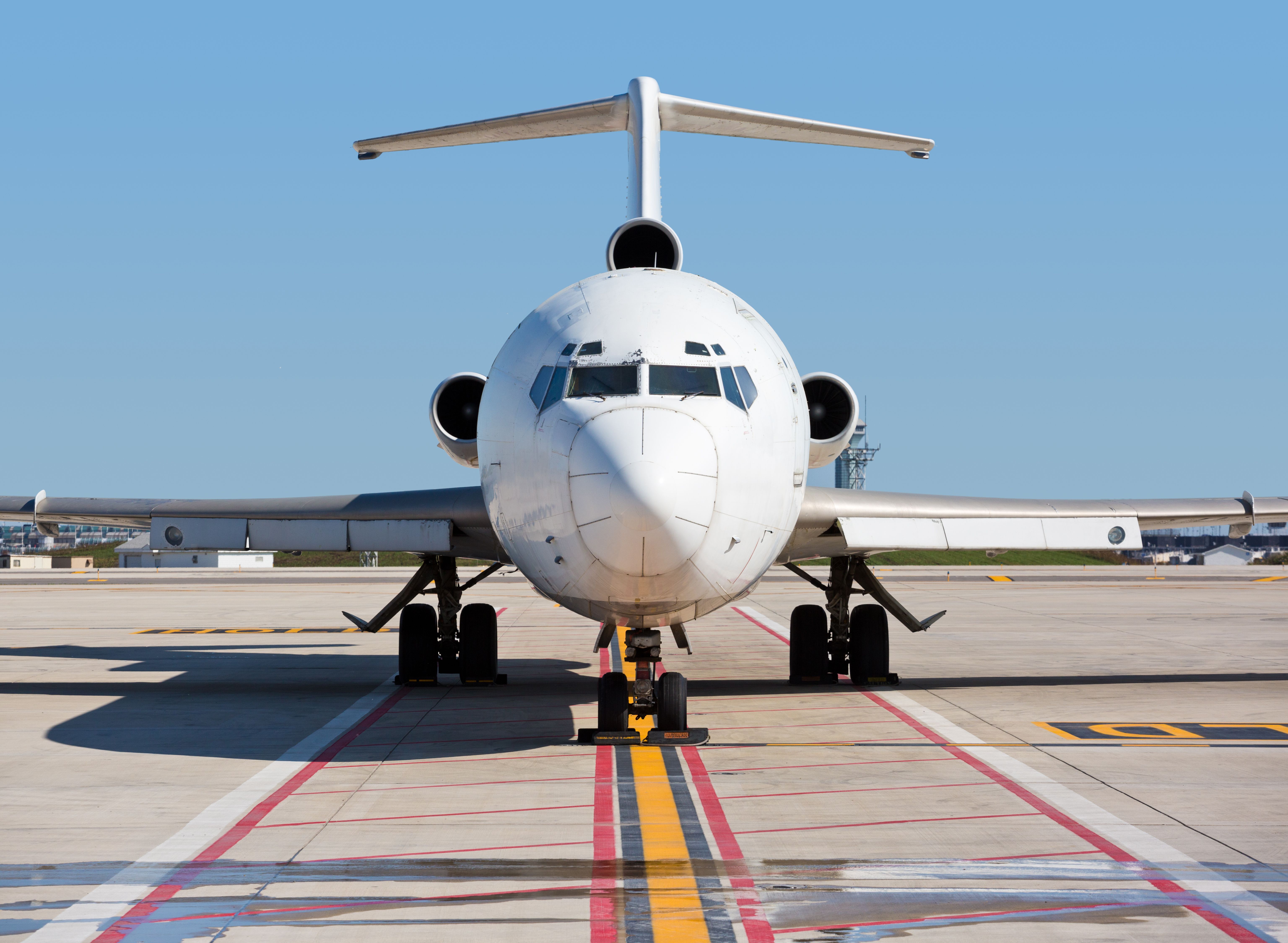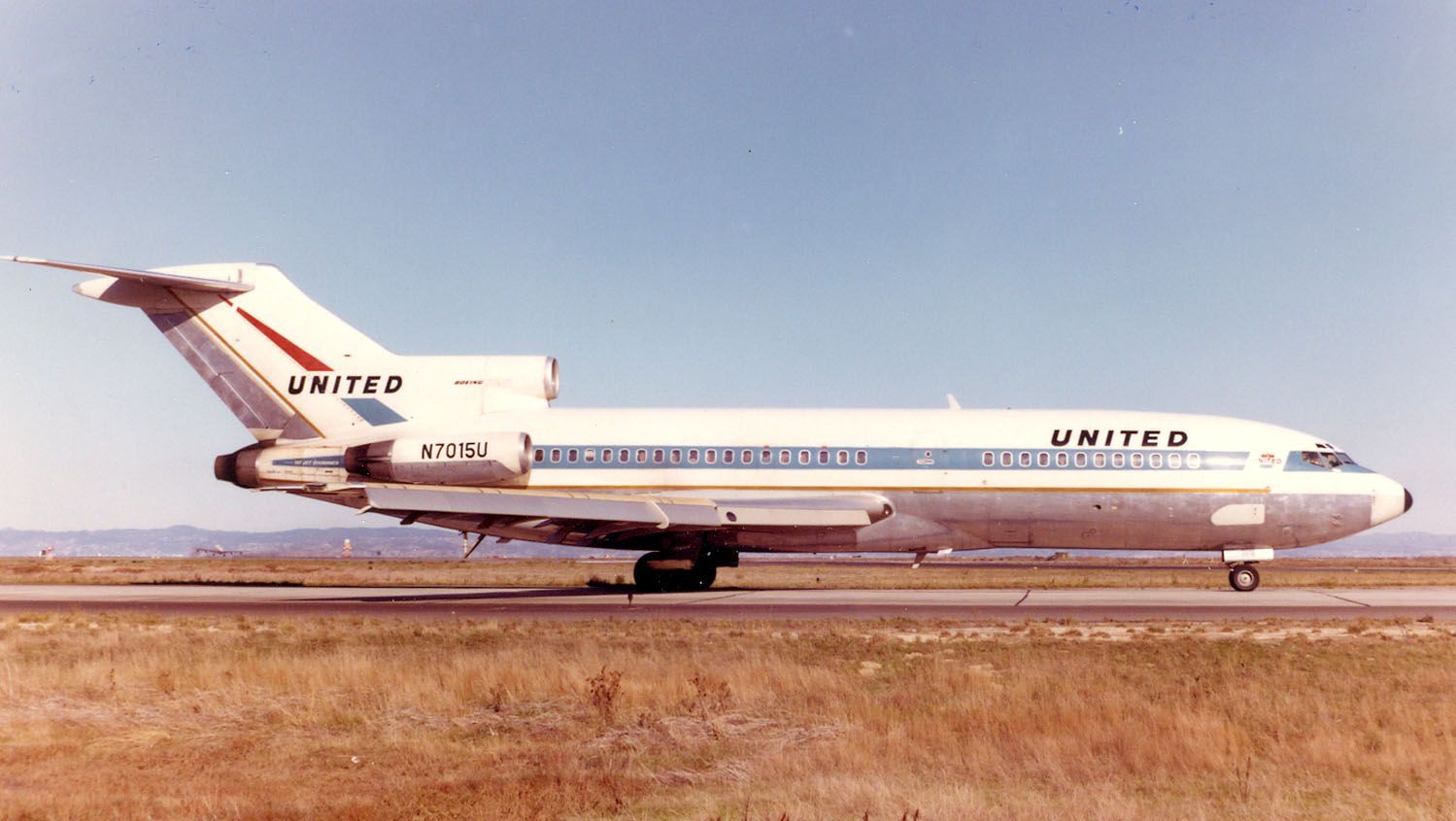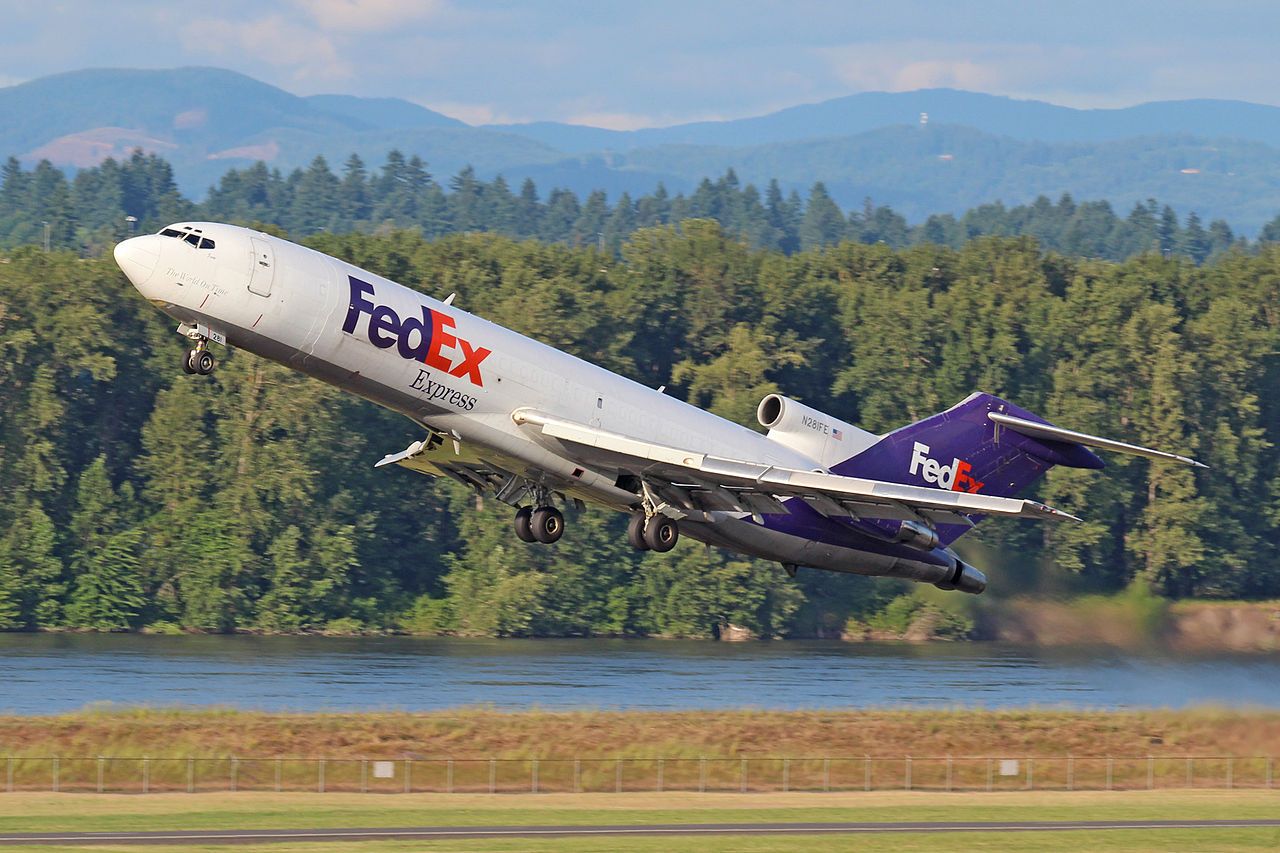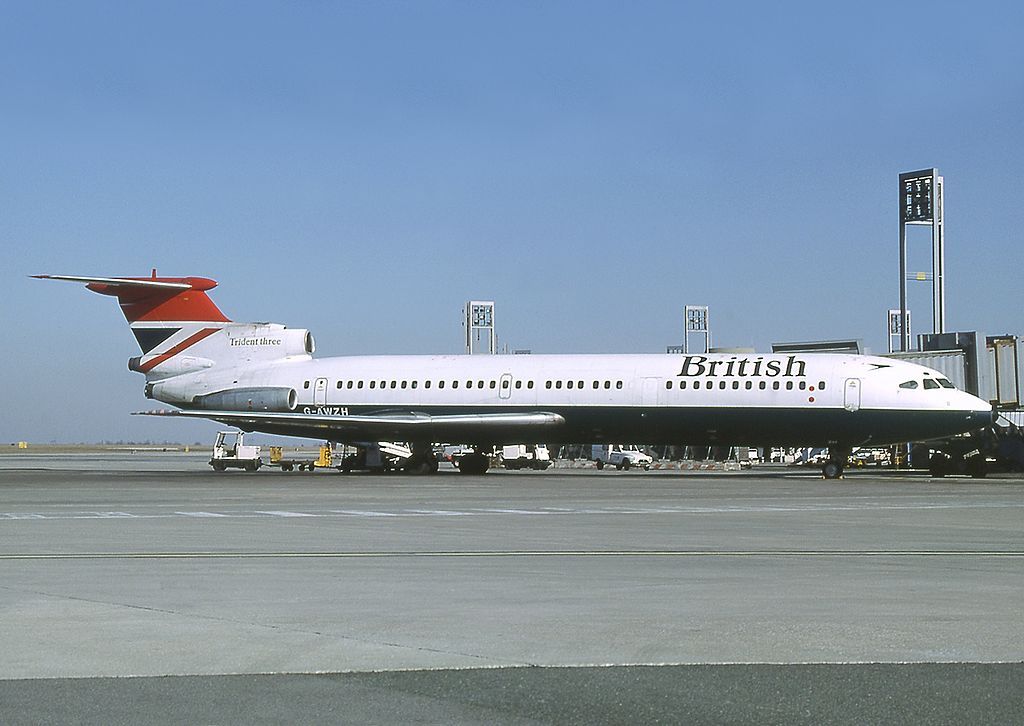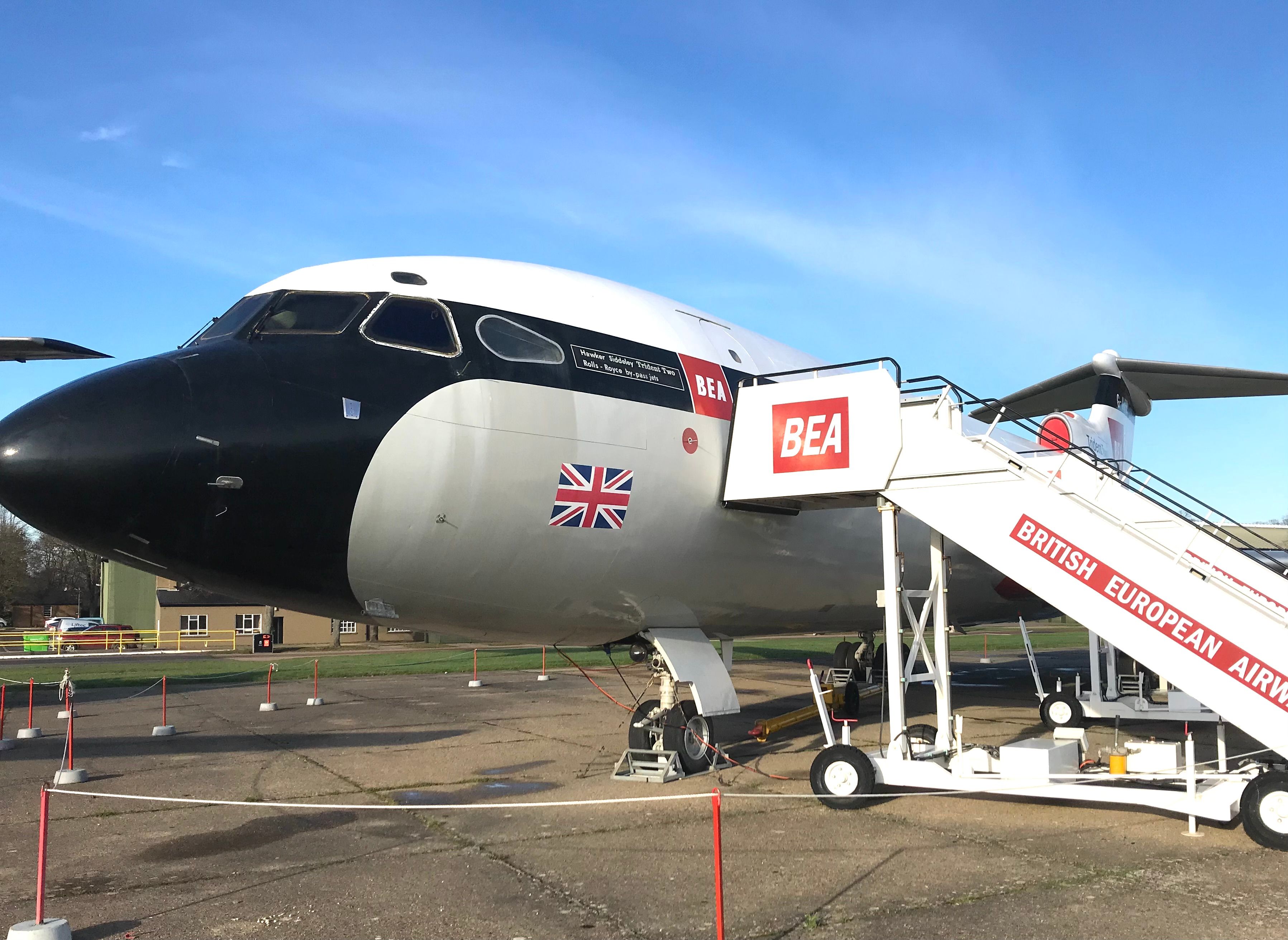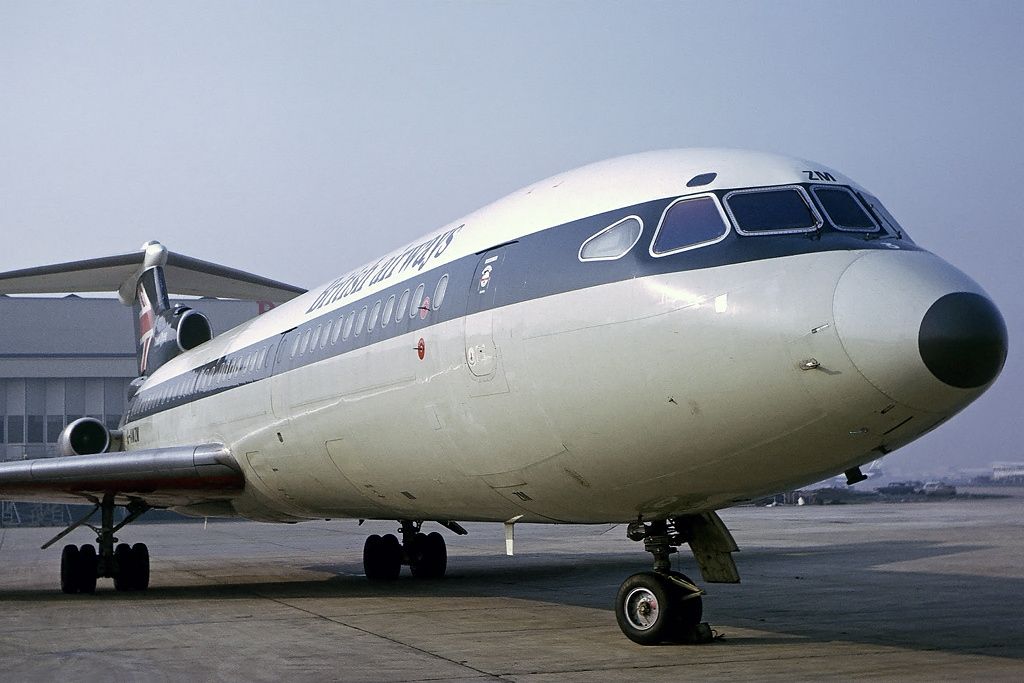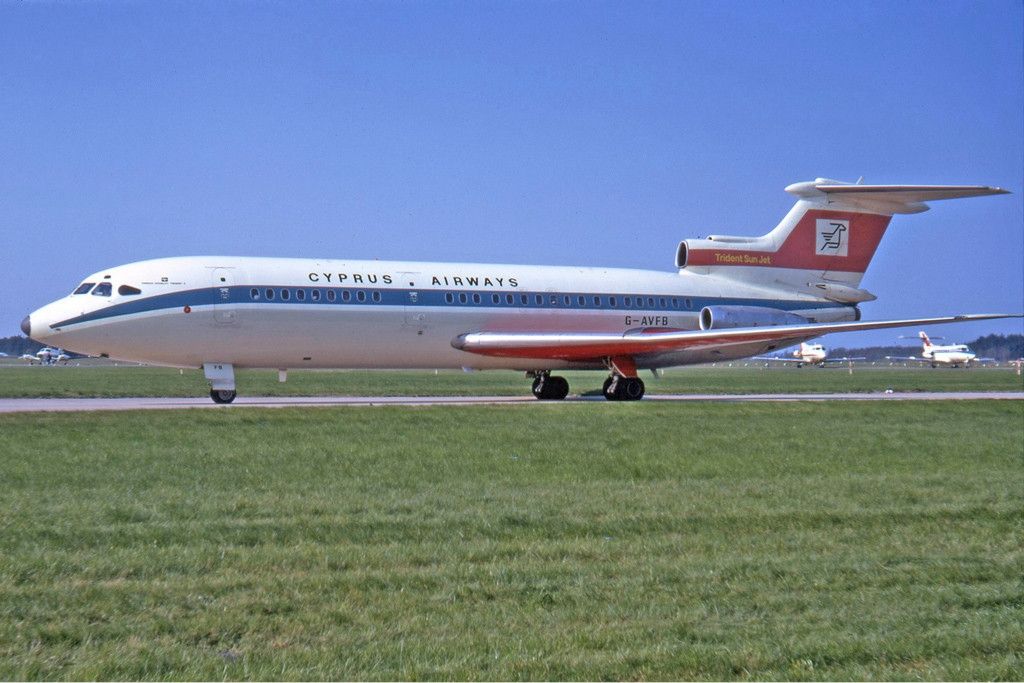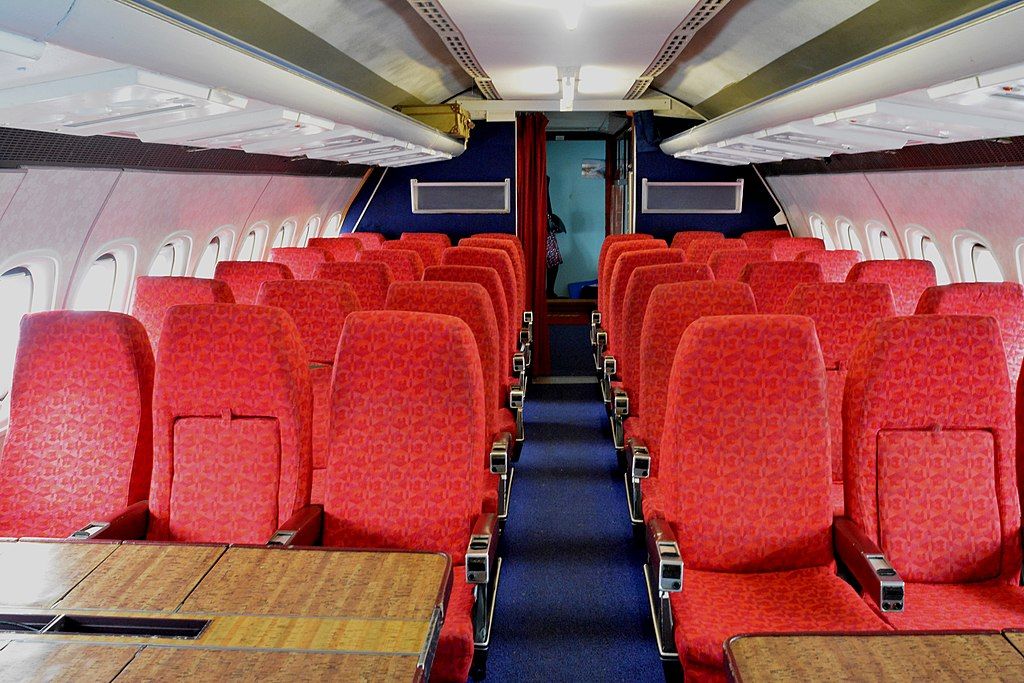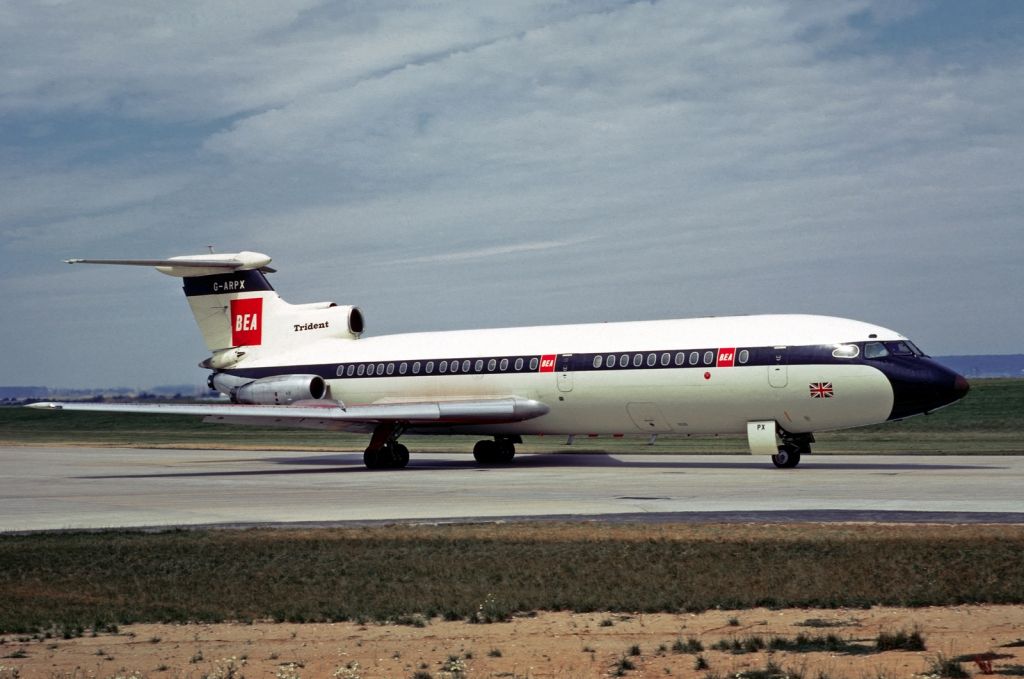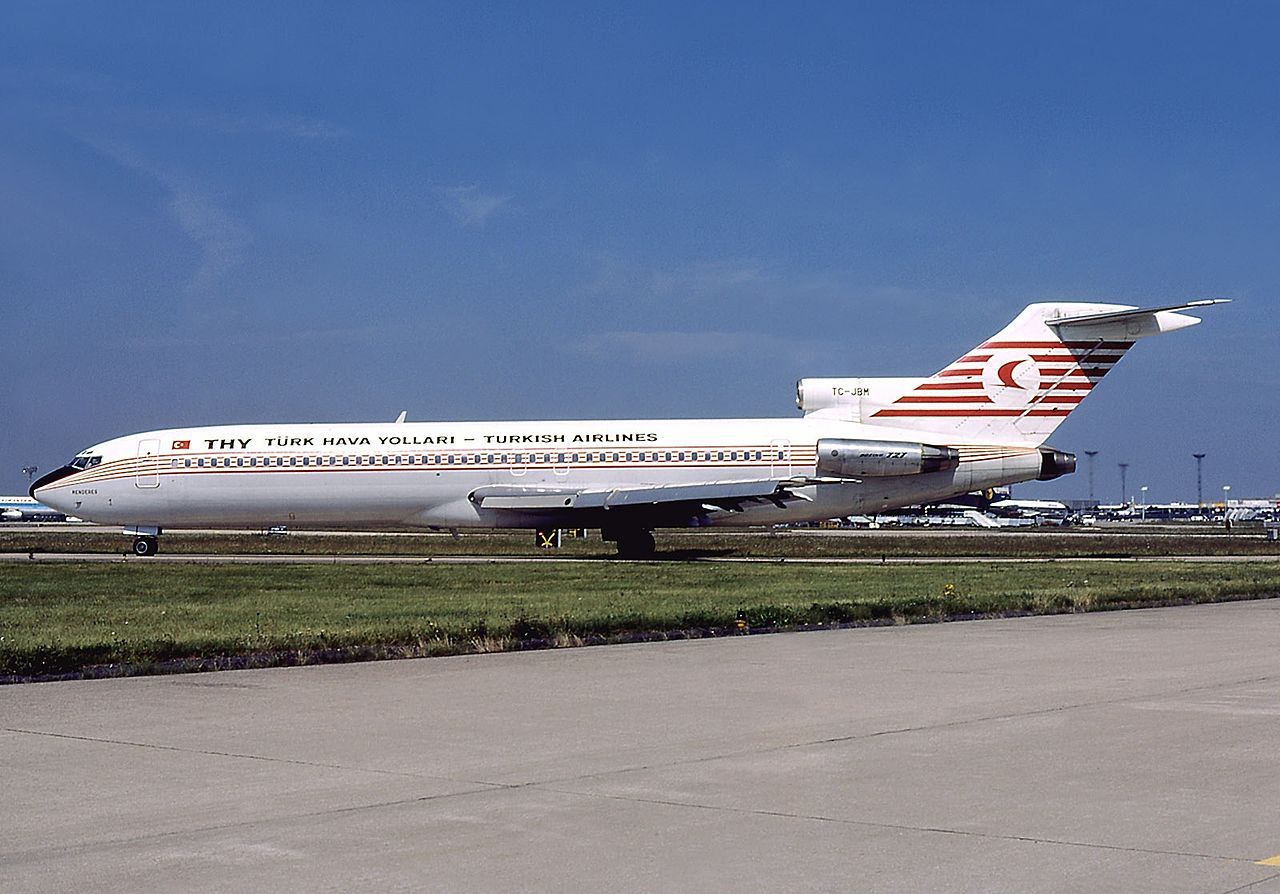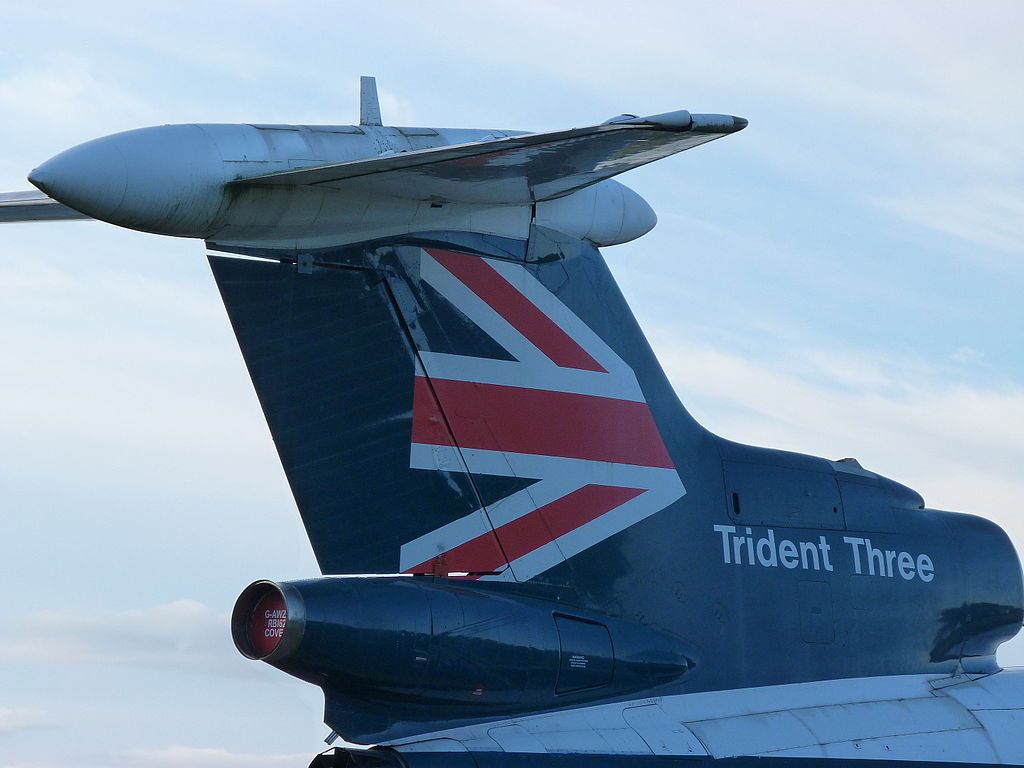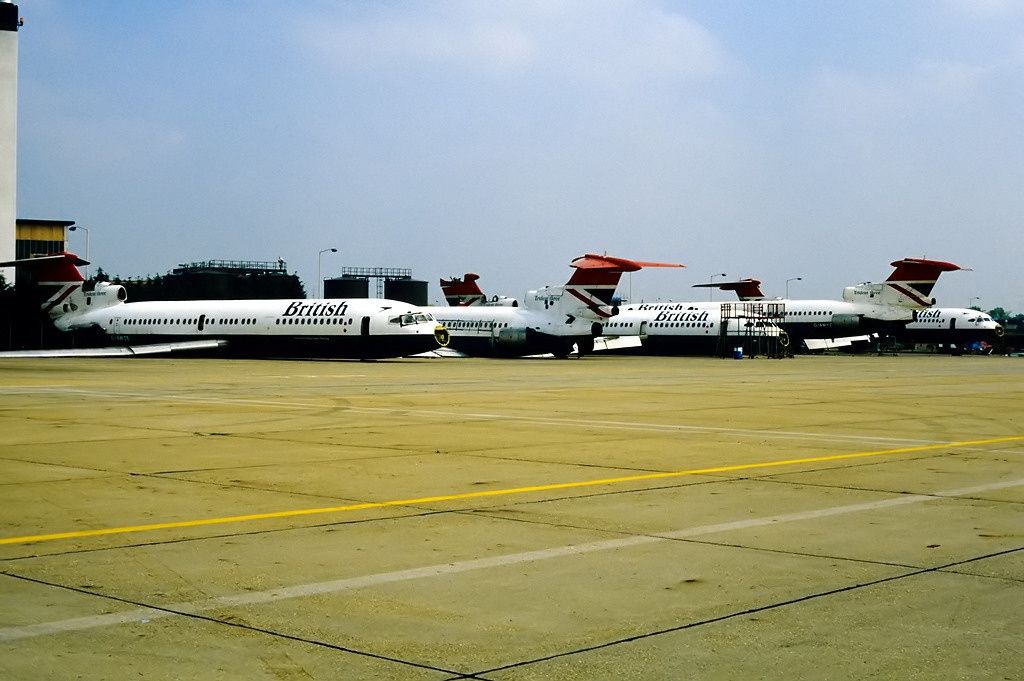Although three-engined passenger airliners are a thing of the past, several examples have graced the skies over the decades. In this third instalment of the series, we take a closer look at two of the most common models - the Boeing 727 and the Hawker Siddeley Trident.
Introducing the competitors
In the 1960s, airlines needed a passenger aircraft that could perform multiple sectors daily, carrying at least 100 passengers in speed and comfort to their destination. As the demand for air travel exploded in the early 1960s, airlines were keen to meet this demand and provide fast passenger planes that offered an attractive experience for their customers.
The aircraft had to be versatile, able to operate in a range of meteorological conditions and offer short-field capability. More importantly, the aircraft needed to offer favorable operating economics and be capable of high utilization and quick turnarounds.
Quick to pick up on demand for such an aircraft, manufacturers on both sides of the Atlantic (as well as beyond) were keen to benefit. Designers took to their respective drawing boards, and as the 1960s arrived, two aircraft were launched in quick succession.
In the United States, the long-established Boeing Company launched their Boeing model 727, while over in Great Britain, Hawker Siddeley, an amalgam of various British aerospace companies, presented their HS121 model to the world, later to become known as the 'Trident.' Although relatively similar in design, the two aircraft would fare very differently in their searches for worldwide airline customers.
The Boeing 727 - a brief history
Even before the Boeing 707 was ready for service, the Boeing Company had realized the desirability for a new short to medium-range airliner. In February 1966, it began to ask the airlines what their requirements might be.
The responses threw up several considerations - an aircraft capable of higher seating configurations to meet the massive demand for air travel, short-field takeoff and landing capabilities so that the plane could operate into smaller municipal/regional airports in the US and beyond, and the ability to turnaround the aircraft quickly being just a few.
Early estimates suggested a potential market for 300 or more aircraft. Additionally, with many existing Boeing customers having already ordered the Boeing 707 or 720 models, there was a desirability to incorporate as many components and systems from those aircraft into the new design as possible.
United Airlines had shown a great deal of interest in the aircraft from an early date, and the requirements of this operator had considerable influence over the final design. Eastern Airlines was also a significant potential customer; between these two companies, 80 aircraft were required. On the back of this interest, Boeing decided to proceed with the Boeing 727 in August 1960.
The first 727, a production aircraft in United Airlines livery, made its maiden flight on February 9th, 1963.
Airline services began with the 727-100 by Eastern Airlines on February 1st, 1964, with United Airlines following just five days later. Both airlines found that the economics of the airplane were even better than Boeing had promised. However, by the summer of 1964, just over 200 727s had been ordered, leading Boeing to revisit the drawing board.
There was growing demand by airlines for a stretched 727 with a higher passenger capacity but with the same economics. Boeing, therefore, announced in August 1965 that the model 727-200 would go into production. This design featured inserting two 10ft (3.05m) fuselage plugs, one forward of the wing and one aft, and was capable of seating up to 189 passengers.
The first airline to order the new variant was Northwest Airlines (since merged into Delta Air Lines) and, following certification of the type in November 1967, became the first commercial operator of the type on December 14th, 1967.
By this point, Boeing 727 orders had climbed to over 500, of which almost 130 were for the larger model. Production of the 727-100 ended in late 1973, leaving the 727-200 (and later the 727-200 Advanced) the only variant available.
Production of the 727-200 ended in 1984, by which total Boeing 727 sales had reached 1,831 airframes, with the 727-200 and 727-200 Advanced versions making up almost 1,300 of these sales.
The Hawker Siddeley Trident - a brief history
The Trident originated as the de Havilland DH121, proposed in 1956 to meet a requirement by British European Airways for a fast short and medium-range aircraft to accommodate 100 passengers. The Trident was subsequently ordered into production in August 1959, having been selected from various proposals submitted by the British aerospace companies Avro, Bristol, and de Havilland.
When de Havilland became part of the Hawker Siddeley group in 1959, it was this company that took over responsibility for the continued development and manufacture of the Trident.
The Trident design was upsized for 140 passengers to be powered by a trio of Rolls-Royce Medway turbofans. However, due to costs and on the insistence of the primary customer, BEA, the final design was downsized once more to 88-95 seats and powered by Rolls-Royce Spey engines. This decision, although pleasing BEA, effectively ended any hopes that the Trident would enjoy large-scale export sales.
The first production Trident, the Trident 1C, first flew on January 9th, 1962. This 103-seat variant failed to attract the attention of any airline outside the UK, and this led to the development of the Trident 1E, which first flew in September 1965.
This variant had standard seating for 115 passengers, although 139 could be accommodated in a high-density layout. The first commercial service of the Trident took place on April 1st, 1964 - two months after the Boeing 727.
A further developed Trident 2E also failed to attract foreign airlines other than an order for 33 for CAAC (Now Air China) plus two for Cyprus Airways. This was in addition to 15 ordered by BEA.
From the outset, it had been intended that the Trident, often operating in unpredictable European weather conditions, should have equipment that would ensure high utilization. This included a Smith Industries autoland system, and the Trident 2Es became the first planes in the world to have a full, all-weather operational instrumentation of this nature.
The last major production version of the Trident was the Trident 3B, a high-capacity short-range version of the Trident 1E, with a fuselage stretched by 16 ft 5 in (5 meters) to seat a maximum of 180 passengers.
Given the additional weight of this design, an additional Rolls-Royce turbojet, located beneath the rudder in the aircraft's tail, provided extra thrust on takeoff. The first flight of a Trident 3B with all four engines operating took place on March 22nd, 1970.
The Hawker Siddeley Trident's demise came about in the early 1980s after the International Civil Aviation Organization (ICAO) demanded older jets be fitted with hush kits to reduce aircraft noise. The new requirements would come into effect on January 1st, 1986, giving airlines plenty of time to decide what to do with their older planes.
British Airways, the largest operator of the Trident, did not see the fix as commercially viable and retired its Trident fleet in 1985. By the time production ended in 1975, 117 Tridents of all variants had been built, with the final two delivered to CAAC in a 152-passenger layout.
What were the similarities between the two models?
The two aircraft were similar in many ways, having been designed in parallel to a specific set of customer requirements. The performance needed by the airlines called for three engines, with seating for around 100 passengers and a durable and reliable design capable of flying multiple sectors daily.
Both aircraft feature a low, swept wing, with a high T-tail design and a third engine mounted within the tail structure, with the exhaust pipe of the number three engine snaking through the rear fuselage, not dissimilar to the Lockheed TriStar.
Both aircraft feature overwing emergency exits and also 'eyebrow' cockpit windows over the main forward-facing flight deck windows used by the crew.
What were the key differences between the two aircraft?
While developed mainly in parallel to the same requirements from airlines at the same time, there were some key differences between the two models. We will look at each aspect of these differences in turn, starting with capacity, followed by each model's leading performance and technical specifications, powerplants, orders, and finally, the critical external differences between the two.
Capacity
The initial Boeing 727-100 model had seating for around 120 passengers. Eastern Airlines operated its aircraft in a 12 first class and 107 economy class configuration, while American Airlines offered a more spacious layout of 14 first class and 86 economy seats. Once the 727-200 arrived on the scene, the capacity was upgraded to between 163 and 189 passengers, depending on the airline configuration.
In terms of the Trident, the different variants (like the 727) had various seating capacities. The initial model, the Trident 1C, could seat up to 103 passengers in a single-class layout. By the time the 1C variant had been developed, the capacity had increased to between 115 and 139 passengers in a high-density configuration. This number was more in line with the Boeing 727-100.
The Trident's maximum capacity came with the introduction of the Trident 3B, which could seat up to 180 passengers, not far off the 189 seats offered by its American-built rival.
Performance and specifications
The Boeing 727-200 offered a maximum speed of 621 mph (999 kph) at 24,700ft (7,530m), although operators tended to fly the aircraft at its optimum cruising speed of 570mph (917 kph). The aircraft offered a maximum range (with a maximum payload) of 2,487 miles (4,002 km).
The 200 series model was 153ft 2 in (46.69m) in length, with a height of 34 ft (10.4m). The wing span measured 108 ft (32.92m) from wingtip to wingtip, with the wing area measuring 1,700 sq ft (157.93 sq m). In terms of performance, the aircraft had a maximum takeoff weight of 209,500 lbs (95.027kg).
The Trident 3B was slightly slower than the 727-200, offering a maximum speed of 605 mph (974 kph). The range also came up short against its American rival, offering a maximum capacity of 2,398 miles (3,860km).
The 3B variant measured in at a length of 114 ft 9 in (34.98m) - significantly shorter than the 727-200 with the resulting loss of seating capacity. The wing span measured 97 ft 12 in (29.87m), with the wing area measuring 1,456 sq ft (135.3 sq m). The smaller wing of the Trident meant less fuel and, consequently, less range.
Regarding performance, the Trident 3B had a maximum takeoff weight of 144,001 lbs (65,318kg). Once more, the maximum takeoff weight offered by the Trident fell far short of that provided by the Boeing 727-200. The service ceiling was 36,000ft (10,973m).
Powerplants
The Boeing 727 was powered by three US-built Pratt & Whitney JT8D-9A turbo fans, with two mounted on either side of the rear fuselage and a third mounted in the tail in a central position. These powerplants provided 14,500 lbs (6,577 kg) of thrust on takeoff.
The Trident 3B was powered by three British-built Rolls-Royce RB163 Spey Mk.512-5W turbofans, located similarly to the 727. These engines were capable of providing 12,000 lbs (5,454 kg) of thrust - a markedly lower figure than the Pratt & Whitney engines supplied on the 727-200.
Order books
The Trident, although not a commercial failure entirely, failed to win any major overseas orders. The lack of capacity, range and speed all contributed to the lack of interest from major airlines. Some used models later found their way to overseas operators but were not widely used.
At one point, American Airlines had shown significant interest in the Trident, although it required various modifications to the design to make the aircraft fit for its purposes. As Hawker Siddeley was unwilling to produce the desired changes due to the costs involved, American Airlines' order went to Boeing and the 727-100. This was not the only time the British-built trijet lost out on orders to its American counterpart.
Ultimately, the failure of the Trident to accrue any significant interest from major airlines led to its early demise, selling just 117 aircraft in total during its production run from 1968 until 1975. The Boeing 727 family was a massive success for the Boeing Company, selling 1,831 units in total and becoming the most popular commercial aircraft it had produced at that time.
External differences
To the casual bystander, the external differences between the Boeing 727 and the Trident may go unnoticed. However, several distinguishing features set the two airplanes apart on closer inspection.
- Where the 727 offered passengers access and egress through a rear ventral airstair beneath the tail, the Trident did not have this facility incorporated in its design.
- The Trident 3B had the very obvious fourth powerplant located at the root of the tail structure to provide additional performance on takeoff - a noticeable visual difference from the 727.
- While both models have cockpit eyebrow windows, the Trident had just a pair, whereas the 727 had four in total, similar in design to the 707/720 family and earlier 737s.
- While referencing, the Trident's rearmost cockpit side window sloped downwards to the rear, whereas the 727s side cockpit windows were more angular in design.
- The Trident had a more bulbous structure at the top of the vertical tail with both fore and aft fairings. The Boeing 727's sleek tail design had neither of these fairings.
- The Trident's nose gear was offset to one side rather than centrally placed under the forward fuselage.
In summary
While both aircraft were designed for similar markets, it was the Boeing 727 that won the race for most entries in the order book. The Trident was too small and not as versatile as the 727 in terms of the wide range of operations it could perform economically.
When challenged to make design changes to make the Trident more attractive to US airlines, the manufacturer refused, given the costs involved.
Had the Trident been able to break into the US market, the story might have been different. However, with a handful of Boeing 727s still flying worldwide today, the Trident remains just another page in the history books of the early jetliners of yesteryear.

